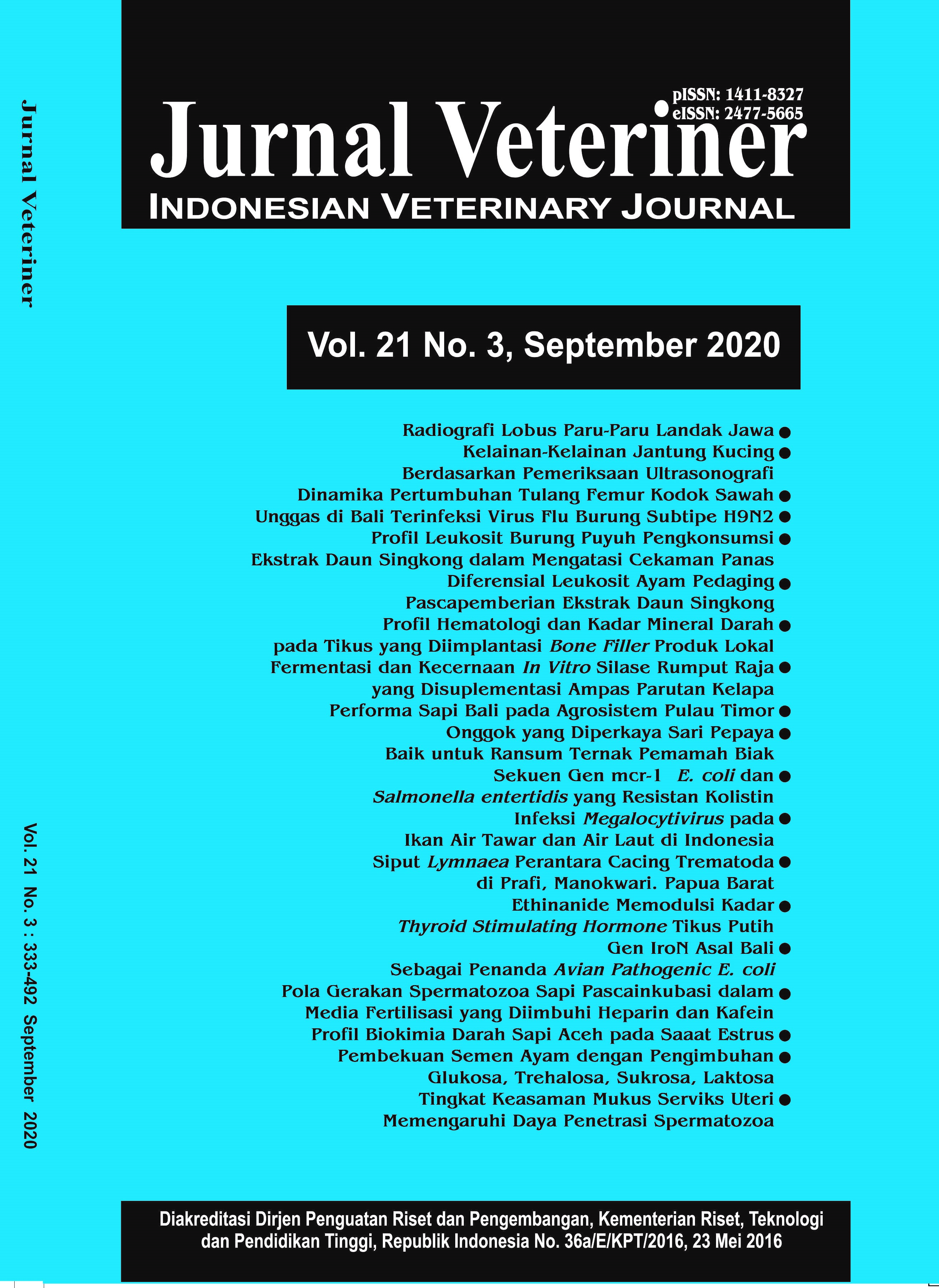SEKUENSING GEN MCR-1 DARI ESCHERICHIA COLI DAN SALMONELLA ENTERITIDIS RESISTAN KOLISTIN
Abstract
Gen mobilized colistin resistance (mcr) merupakan gen resistan kolistin sulfat yang bisa dipindahkan melalui materi genetik bergerak misalnya plasmid. Tujuan dari penelitian ini adalah mengetahui jenis plasmid gen mcr-1 yang berhasil dipindahkan dari satu isolat Escherichia coli resistan kolistin ke Salmonella Enteritidis ATCC 13076 (dua isolat), dan satu isolat E. coli O157:H7 resistan kolistin positif gen mcr-1. Sekuensing gen mcr-1 kemudian dianalisis di unit Biotek Balai Besar Pengujian Mutu dan Sertifikasi Obat Hewan dengan menggunakan basic local alignment search tools (BLAST) dan software MEGA7. Hasil sekuensing gen mcr-1 dengan panjang nukleotida 309 memiliki homologi tinggi dengan data referen dari Genbank pada gen mcr-1 yang terdapat dalam plasmid. Hasil sekuensing DNA gen mcr-1 sampel lebih cenderung termasuk pada tipe plasmid IncI2 atau IncHI2. Hal ini menunjukkan bahwa resistansi kolistin merupakan ancaman yang nyata karena gen resistan mcr-1 yang ada di Indonesia benar berada di plasmid sehingga mudah disebarkan ke bakteri lain.
Kata kunci: mcr-1, plasmid, resistansi
ABSTRACT
The mobilized colistin resistance (mcr) gene is a colistin sulfate resistance gene that can be transferred through mobile genetic material such as plasmids. The purpose of this study was to determine the type of plasmid mcr-1 gene that was successfully transferred from an isolate of colistin-resistant Escherichia coli to Salmonella Enteritidis ATCC 13076 (two isolates), and one colistin-resistant E. coli O157: H7 that positive mcr-1 gene. The sequencing of the mcr-1 gene was then analyzed in the Biotek unit at National Veterinary Drug Assay Laboratory using basic local alignment search tools (BLAST) and MEGA7 software. The sequencing of the mcr-1 gene with nucleotide length 309 has a high homology with the reference data from Genbank on the mcr-1 gene contained in the plasmid. DNA sequencing of mcr-1 gene samples is more likely to belong to the IncI2 or IncHI2 plasmid types. This shows that colistine resistance is a real threat because the mcr-1 resistance gene in Indonesia is actually in the plasmid so it is easily spread to other bacteria.
Keywords: mcr-1, plasmid, resistance



















